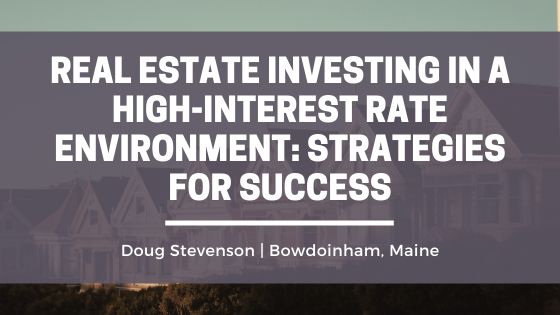Interest rates play a crucial role in real estate investing, influencing mortgage costs, property values, and overall market dynamics. When interest rates rise, borrowing becomes more expensive, reducing affordability for buyers and impacting investor returns. However, real estate investment remains a viable wealth-building strategy if approached with the right strategies. Here’s how investors can navigate a high-interest rate environment successfully.
1. Focus on Cash Flow Over Appreciation
In a low-interest rate environment, investors often prioritize appreciation potential. However, when borrowing costs rise, it’s crucial to focus on cash flow. Seek properties where rental income exceeds mortgage payments, property taxes, and maintenance costs. Investing in high-demand rental markets can ensure steady income even if property values stagnate or decline.
2. Explore Alternative Financing Options
With traditional mortgage rates climbing, investors should consider alternative financing options to mitigate costs:
- Seller Financing – Some sellers may be willing to offer financing at competitive rates.
- Adjustable-Rate Mortgages (ARMs) – While riskier, ARMs can offer lower initial interest rates, making them attractive for short-term holding strategies.
- Private or Hard Money Lenders – Although typically more expensive, these lenders can provide flexibility and quicker access to funds.
3. Look for Motivated Sellers
A high-interest rate environment often leads to more motivated sellers, particularly those struggling with their mortgage payments or needing to offload properties quickly. Investors can negotiate better deals, secure seller concessions, or structure creative financing arrangements that minimize borrowing costs.
4. Invest in Value-Add Properties
Value-add properties—those that require renovations or operational improvements—can provide opportunities for higher returns. By increasing a property’s value through upgrades, investors can justify higher rents and improve cash flow, offsetting the effects of higher financing costs.
5. Consider Markets with Strong Economic Fundamentals
In times of high interest rates, investing in markets with robust job growth, population increases, and diverse economic drivers can mitigate risk. Locations with strong rental demand will be more resilient, ensuring steady occupancy rates and rental income.
6. Partner with Other Investors
Joint ventures and real estate partnerships can help mitigate individual financial risk in a high-interest rate environment. Pooling resources allows investors to access better financing terms, afford higher-value properties, and diversify investment risks.
7. Hold Longer-Term Investments
Short-term flipping strategies become riskier when borrowing costs are high. Instead, investors should consider long-term holds, benefiting from rental income while waiting for interest rates to stabilize or decline. Over time, refinancing opportunities may arise, improving the investment’s profitability.
Final Thoughts
High-interest rates require investors to be more strategic and adaptable. By focusing on cash flow, exploring alternative financing, targeting value-add properties, and investing in strong markets, real estate investors can continue to thrive despite rising borrowing costs. A long-term perspective and a flexible investment strategy will ensure sustained success in any economic climate.

